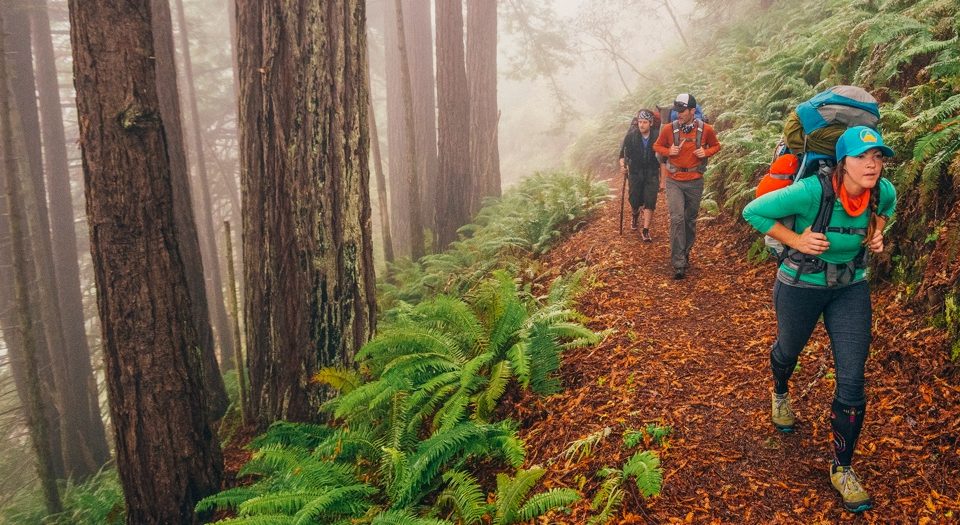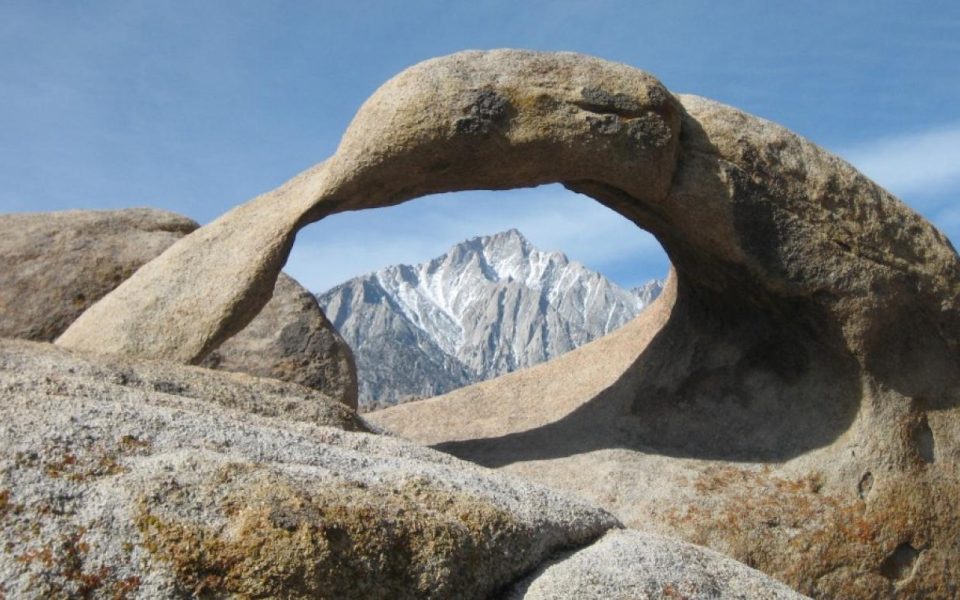Unlocking California’s Hidden Camping Frontier: A Strategic Guide to BLM Dispersed Camping
Tired of refreshing reservation websites at exactly 8:00 AM six months in advance just to secure a basic campsite? California offers a spectacular alternative that savvy outdoor enthusiasts have been quietly enjoying for years: dispersed camping on Bureau of Land Management (BLM) lands. This approach to outdoor adventure bypasses the reservation rat race entirely while delivering some of the state’s most breathtaking landscapes at zero cost.
What Makes BLM Dispersed Camping California’s Best-Kept Secret
BLM land in California offers a fundamentally different camping experience that traditional campgrounds simply can’t match. With over 15 million acres under management (approximately 15% of the state), these public lands provide:
- True solitude: No designated campsites means genuine isolation when desired
- Cost-free access: Zero camping fees across most BLM territories
- Reservation-free flexibility: Spontaneous trips become possible again
- Pristine landscapes: Experience California’s diverse ecosystems without crowds
- Self-reliant adventure: Rediscover camping’s core appeal through preparation and self-sufficiency
The secret appeal isn’t just about escaping fees and reservations—it’s about reconnecting with California’s landscapes on your own terms. Unlike developed campgrounds that funnel visitors into predetermined experiences, BLM lands invite exploration and genuine discovery.
The BLM Advantage: Strategic Benefits Beyond Just “Free Camping”
Dispersed camping on California’s BLM lands isn’t merely a budget alternative—it offers distinct advantages that experienced outdoors people have recognized for generations:
- Photography opportunities: Capture California’s iconic landscapes without fighting crowds for the perfect angle
- Night sky access: Experience truly dark sky viewing unavailable near developed areas
- Wildlife encounters: Observe natural animal behavior patterns undisturbed by concentrated human activity
- Sound environment: Experience the rare commodity of natural silence, free from neighboring campsites
- Camping location control: Select sites based on sunrise/sunset views, wind protection, or proximity to features
While national and state park campgrounds increasingly resemble outdoor hotels, BLM dispersed camping preserves the authentic connection to California’s diverse environments that draws many to outdoor recreation in the first place.
Essential BLM Regions: Where to Find Your Perfect California Camp
California’s BLM territories showcase remarkable diversity, from coastal mountains to high desert plateaus. Here are five key regions with their distinctive characteristics:
1. Eastern Sierra Front
The Eastern Sierra region offers California’s most dramatic mountain backdrops with the Sierra Nevada rising precipitously from the valley floor. Prime locations include:
- Alabama Hills: Famous for dramatic granite formations framing Mt. Whitney
- Long Valley: Hot spring access with volcanic tableland views
- Benton Range: Less visited area with exceptional geology and mining history
Best season: Mid-September through October offers perfect temperatures, minimal crowds, and gorgeous aspen colors.
2. California Desert District
The California desert region provides year-round camping opportunities when you understand seasonal patterns:
- Trona Pinnacles: Otherworldly tufa spires create an alien landscape
- Afton Canyon: Rare Mojave River surface water creates desert oasis
- Cadiz Dunes Wilderness: Remote dune system with remarkable pristine conditions
Best season: November through March avoids dangerous summer heat while offering comfortable days and excellent star visibility.
3. Northern California District
The often-overlooked northern BLM territories offer lush landscapes and fewer visitors:
- Headwaters Forest Reserve: Ancient redwood ecosystem access
- Sacramento River Bend: Riparian zones with excellent wildlife viewing
- South Cow Mountain: Oak woodlands with spring wildflower displays
Best season: April through June brings spectacular wildflower blooms and comfortable temperatures before summer heat.
4. Central California Region
The central region balances accessibility with remarkable landscapes:
- Carrizo Plain National Monument: Expansive grasslands with exceptional spring wildflowers
- Fort Ord National Monument: Coastal access with unique maritime chaparral
- Williams Hill Recreation Area: Oak-studded hills with sweeping Salinas Valley views
Best season: March through May captures optimal green hillsides and wildflower displays.
5. King Range Conservation Area
The King Range represents California’s most dramatic coastal wilderness:
- Lost Coast: Where mountains meet the Pacific in dramatic fashion
- Nadelos Campground vicinity: Access to both mountain and coastal environments
- King Peak approaches: Higher elevation camping with panoramic ocean views
Best season: Late summer through early fall provides the most stable weather and reduced coastal fog.
The 14-Day Framework: Optimizing Your California BLM Experience
The cornerstone regulation for BLM dispersed camping in California is the 14-day stay limit. Understanding this rule and its strategic implications is essential:
- You may stay at one specific location for a maximum of 14 days within any 28-day period
- After 14 days, you must move at least 25 miles away
- The 14-day count applies to the location, not the person (returning early with different people doesn’t reset the clock)
For extended California exploration, strategic movement between BLM regions can create legal continuous camping experiences. For example, rotating between the Eastern Sierra, Northern Mojave, and Central California districts maintains compliance while experiencing diverse landscapes.
Savvy campers build seasonal migration patterns that follow optimal weather conditions: desert regions in winter, coastal areas in summer, and mid-elevation zones during transition seasons.
Essential California BLM Camping Regulations That Matter
Beyond the 14-day rule, several key regulations shape the California BLM camping experience:
- Distance requirements: Camp at least 200 feet from water sources to protect riparian ecosystems
- Road proximity: Remain within 150 feet of designated roads (no cross-country travel)
- Fire restrictions: Check current fire regulations before every trip—they change frequently in California
- Cultural resources: Maintain distance from archaeological sites and never disturb artifacts
- Waste management: Pack out everything you bring in—no exceptions
Remember that California BLM regions occasionally implement area-specific supplemental rules, especially in high-use zones. Always check with the managing field office before your trip for current regulations.
Fire Safety: The Non-Negotiable California Requirement
California’s fire vulnerability demands extraordinary caution from BLM campers. Follow these essential protocols:
- Obtain a valid California Campfire Permit before any trip
- Check current fire restriction levels, which often prohibit all open flames during summer months
- Use established fire rings when available and permitted
- Keep fires small—no bonfires under any circumstances
- Maintain firefighting water supply (minimum 5 gallons) near any fire
- Never leave fires unattended for any period of time
- Ensure fires are completely extinguished until cold to the touch
Many experienced California BLM campers now opt for flameless alternatives year-round: LED lighting systems, propane fire pits with auto-shutoff features, and efficient camp stoves that minimize risk while still providing necessary functionality.
California-Specific Leave No Trace Practices
California’s diverse BLM ecosystems require tailored Leave No Trace approaches beyond standard principles:
- Desert surfaces: In desert regions, travel on durable surfaces and avoid cryptobiotic soil crusts that may take decades to recover from disturbance
- Water scarcity: Minimize soap use even with biodegradable products—California’s arid environments break down substances slowly
- Wildlife adaptation: California wildlife has adapted to water scarcity; never camp directly adjacent to water sources
- Fire impacts: Even when legal, consider foregoing campfires entirely—burned areas in California take years longer to recover than in wetter regions
- Social trails: Stick to established paths; California’s slow-growing vegetation makes new trails persistent
Seasonal BLM Camping Strategy: Maximizing Year-Round Opportunities
California’s climate diversity creates year-round BLM camping possibilities when you understand regional patterns:
Winter (December-February)
- Prime territories: Low desert regions under 2,000 feet elevation
- Key considerations: Prepare for overnight freezing temperatures even in desert regions
- Recommended areas: Imperial Sand Dunes, Picacho State Recreation Area vicinity, Meccacopia Mountains
Spring (March-May)
- Prime territories: Mid-elevation desert and grassland areas (2,000-4,000 feet)
- Key considerations: Be prepared for strong winds, especially in desert transition zones
- Recommended areas: Carrizo Plain, Alabama Hills, Jawbone Canyon
Summer (June-August)
- Prime territories: Coastal zones and high elevation areas above 6,000 feet
- Key considerations: Fire restrictions typically at their most stringent; prepare for flameless camping
- Recommended areas: King Range, Bodie Hills, Glass Mountain vicinity
Fall (September-November)
- Prime territories: Mid and high elevation areas with fall color opportunities
- Key considerations: Increasingly variable weather; pack for both summer and winter conditions
- Recommended areas: Eastern Sierra front, Caliente Range, Cache Creek Natural Area
Three Undiscovered California BLM Treasures Worth Finding
While some BLM areas have gained popularity, these three spectacular regions remain largely unknown:
1. Coyote Mountains Wilderness
Located near Anza-Borrego but with a fraction of the visitors, this rugged mountain range features:
- Dramatic limestone formations with marine fossils
- Panoramic views extending into Mexico
- Desert bighorn sheep habitat with frequent sightings
- Exceptional geology representing 500 million years of Earth history
2. Massacre Rim Wilderness Study Area
This remote northern California location offers:
- Officially designated Dark Sky Sanctuary status—among the darkest night skies in America
- Volcanic tablelands with sweeping Great Basin views
- Archaeological sites showing 10,000+ years of human history
- Spring wildflower displays that remain photographer-free
3. Irish Hills Natural Area
This central coast gem provides:
- Rare coastal terrace prairie ecosystem
- Pacific Ocean views without coastal development
- Spring wildflower displays including several endangered species
- Moderate climate allowing year-round camping
Essential Gear Specifically for California BLM Success
California’s BLM lands require specialized equipment beyond standard camping gear:
Water Management
- WaterPORT portable pressurized system: Allows rationed usage of limited water supplies
- Multiple small containers rather than single large tanks for better weight distribution
- Silicone collapsible containers for space efficiency when empty
Navigation Systems
- Gaia GPS Premium with downloadable BLM land designation overlays
- Paper BLM Surface Management maps for your region as backup
- InReach satellite communicator for emergency communication
California-Specific Adaptations
- Portable mesh shade structures for desert regions
- Propane fire pit with auto-shutoff safety features
- Portable power station with solar charging capabilities
- Portable toilet system with waste treatment
Long-Term Visitor Areas: California’s Seasonal Home Alternative
For those seeking extended winter stays beyond the standard 14-day limit, California’s Long-Term Visitor Areas (LTVAs) provide a structured alternative:
- Seven-month permits (September-April) cost approximately $180
- Shorter 14-day permits available for about $40
- Basic amenities include dump stations, trash collection, and minimal water access
- Imperial Dam LTVA represents California’s primary long-term option
These areas have evolved unique seasonal communities with informal social structures, making them excellent options for winter visitors seeking both solitude and occasional community connection.
Your First California BLM Trip: A Simple Success Formula
For your inaugural California BLM camping experience, follow this streamlined approach:
- Select beginner-friendly locations: Start with Alabama Hills, Jawbone Canyon, or areas near Joshua Tree National Park
- Time your trip strategically: Choose spring or fall for moderate temperatures and conditions
- Prepare thoroughly: Carry more water than you think necessary (minimum 2 gallons per person per day)
- Download offline resources: Ensure maps, regulations, and emergency information are accessible without service
- Create backup plans: Identify multiple potential camping locations in case primary choices are occupied
- Start small: Begin with a 2-3 day trip before attempting longer stays
- Leave buffer supplies: Pack 30% more essentials than your calculated needs
By starting with accessible areas and building experience gradually, you’ll develop the confidence to explore California’s more remote BLM treasures while maintaining safety and environmental responsibility.
Conclusion: Preserving California’s Dispersed Camping Heritage
The privilege of dispersed camping on California’s BLM lands exists because generations of responsible users have demonstrated that public lands can be enjoyed without significant impact. As visitation increases, maintaining this tradition requires conscious stewardship from every visitor.
Each time you camp on California’s BLM lands, you vote for the future of this access through your actions. By following regulations, minimizing impact, and sharing ethical practices with others, you help ensure that these remarkable opportunities for genuine wilderness connection remain available for generations to come.
California’s BLM lands represent an increasingly rare commodity in our hyperconnected world: places where spontaneity, self-reliance, and direct natural engagement remain possible without reservations, permits, or significant expense. Their continued accessibility depends on visitors who understand that alongside this remarkable freedom comes genuine responsibility.


